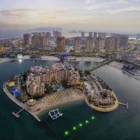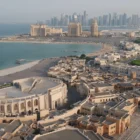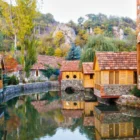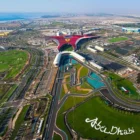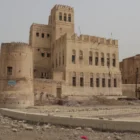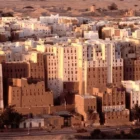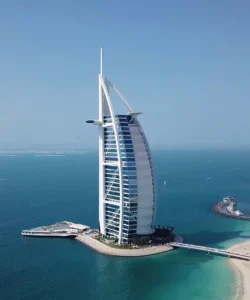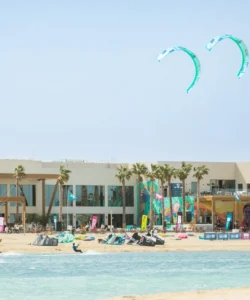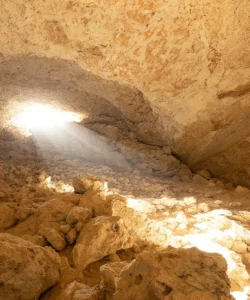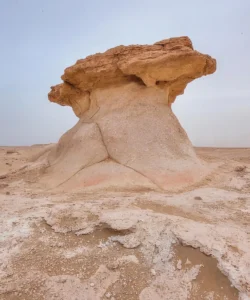The National Museum of Qatar (NMoQ) is an architectural marvel and a cultural institution that tells the story of Qatar and its people. Through its innovative design and immersive exhibits, it gives a voice to the nation’s rich heritage and ambitious future.
Listen to an introduction about National Museum of Qatar
Name and Address
- Official Name: National Museum of Qatar (NMoQ)
- Address: Museum Park Street, Doha, Qatar.
- Location: Located across the Corniche from the Museum of Islamic Art, it is built around the original palace of Sheikh Abdullah bin Jassim Al Thani.
How to Get There
- Metro: The most convenient way is to take the Gold Line to the National Museum station.
- Taxi/Car: The museum is easily reachable by car or taxi and is a well-known landmark in the city.
Landscape and Architecture
The building is a breathtaking architectural achievement, celebrated for its complex and symbolic design.
- Architect: Jean Nouvel, a Pritzker Prize-winning French architect.
- Design Concept: The structure is inspired by the desert rose, a crystalline formation found in the deserts of the Gulf region. The building is composed of 539 massive, interlocking discs that mimic the crystal’s intricate, bladelike petals.
- Structure: This radical design creates a series of unique, non-vertical interior spaces that guide visitors on a chronological journey. The entire modern structure is built around the historic, restored palace of Sheikh Abdullah bin Jassim Al Thani, which sits at the heart of the museum.
- Setting: The museum is surrounded by a landscaped park that features native Qatari plants and tells the story of how the local population used them.
What Makes It Famous
- Architectural Icon: The museum is world-famous for its groundbreaking “desert rose” architecture, a feat of engineering and design.
- Narrative Journey: Unlike a traditional museum, NMoQ takes visitors on an immersive, multi-sensory journey through Qatar’s history, divided into three chapters: Beginnings, Life in Qatar, and The Modern History of Qatar.
- Immersive Exhibits: The galleries use large-scale, specially commissioned art films projected across the curved walls, oral histories, and evocative aromas to bring the story of Qatar to life.
- Integration of Old and New: It is celebrated for beautifully integrating the historic Emiri palace within its ultra-modern structure, physically connecting Qatar’s past and present.
Collection Highlights
The museum’s treasures are presented as part of its grand narrative.
- The Pearl Carpet of Baroda: A key highlight, this masterpiece was commissioned in 1865 and is embroidered with over 1.5 million pearls, as well as diamonds, rubies, and emeralds.
- The Historic Palace: The carefully restored palace of Sheikh Abdullah bin Jassim Al Thani is the museum’s central and most important artifact.
- Immersive Galleries: The true “collection” is the experience itself—the journey through 11 distinct galleries that chart the natural history, archaeology, culture, and modern transformation of Qatar.
Differences from Other Wonders
The National Museum of Qatar offers a very different experience from the nearby Museum of Islamic Art.
- Architectural Style: NMoQ’s design is expressive and organic (the desert rose), while MIA’s is geometric and monumental (inspired by an ablution fountain).
- Collection Scope: NMoQ tells the specific story of Qatar, from its geology to its modern state. MIA’s collection is pan-Islamic, showcasing art from across the Muslim world over 1,400 years.
- Visitor Experience: The experience at NMoQ is a guided, chronological narrative told through immersive technology. The experience at MIA is one of appreciating a vast collection of individual artistic masterpieces.
National Museum of Qatar Photos:
































